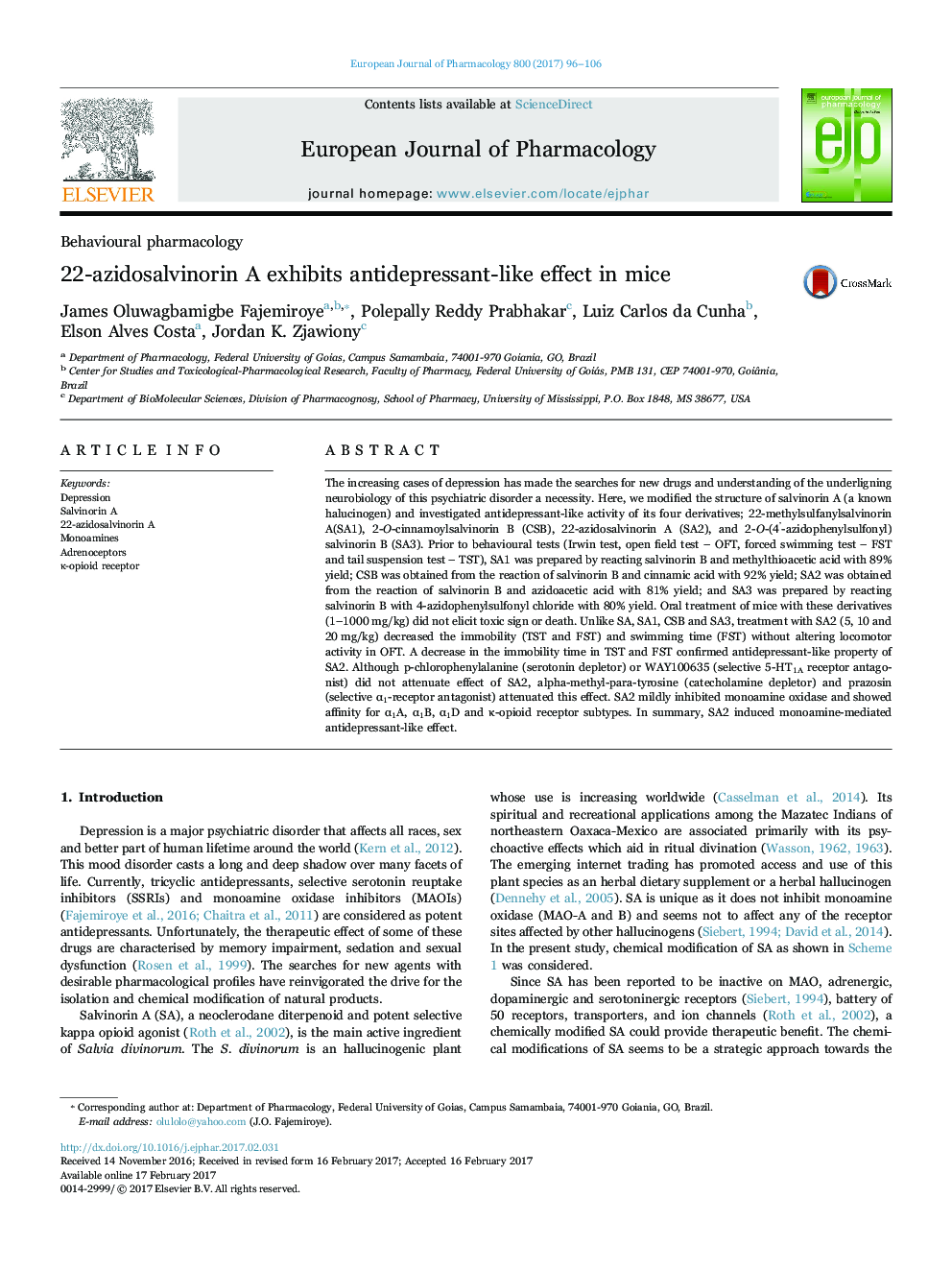| Article ID | Journal | Published Year | Pages | File Type |
|---|---|---|---|---|
| 5554643 | European Journal of Pharmacology | 2017 | 11 Pages |
The increasing cases of depression has made the searches for new drugs and understanding of the underligning neurobiology of this psychiatric disorder a necessity. Here, we modified the structure of salvinorin A (a known halucinogen) and investigated antidepressant-like activity of its four derivatives; 22-methylsulfanylsalvinorin A(SA1), 2-O-cinnamoylsalvinorin B (CSB), 22-azidosalvinorin A (SA2), and 2-O-(4'-azidophenylsulfonyl)salvinorin B (SA3). Prior to behavioural tests (Irwin test, open field test - OFT, forced swimming test - FST and tail suspension test - TST), SA1 was prepared by reacting salvinorin B and methylthioacetic acid with 89% yield; CSB was obtained from the reaction of salvinorin B and cinnamic acid with 92% yield; SA2 was obtained from the reaction of salvinorin B and azidoacetic acid with 81% yield; and SA3 was prepared by reacting salvinorin B with 4-azidophenylsulfonyl chloride with 80% yield. Oral treatment of mice with these derivatives (1-1000 mg/kg) did not elicit toxic sign or death. Unlike SA, SA1, CSB and SA3, treatment with SA2 (5, 10 and 20 mg/kg) decreased the immobility (TST and FST) and swimming time (FST) without altering locomotor activity in OFT. A decrease in the immobility time in TST and FST confirmed antidepressant-like property of SA2. Although p-chlorophenylalanine (serotonin depletor) or WAY100635 (selective 5-HT1A receptor antagonist) did not attenuate effect of SA2, alpha-methyl-para-tyrosine (catecholamine depletor) and prazosin (selective α1-receptor antagonist) attenuated this effect. SA2 mildly inhibited monoamine oxidase and showed affinity for α1A, α1B, α1D and κ-opioid receptor subtypes. In summary, SA2 induced monoamine-mediated antidepressant-like effect.
